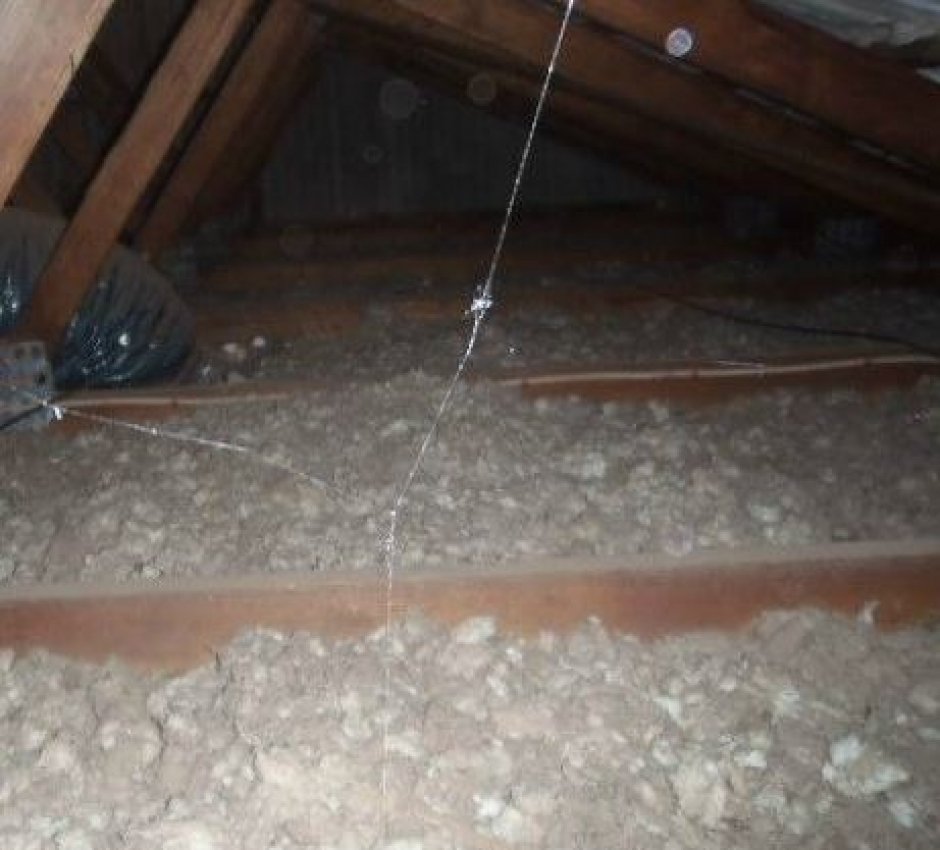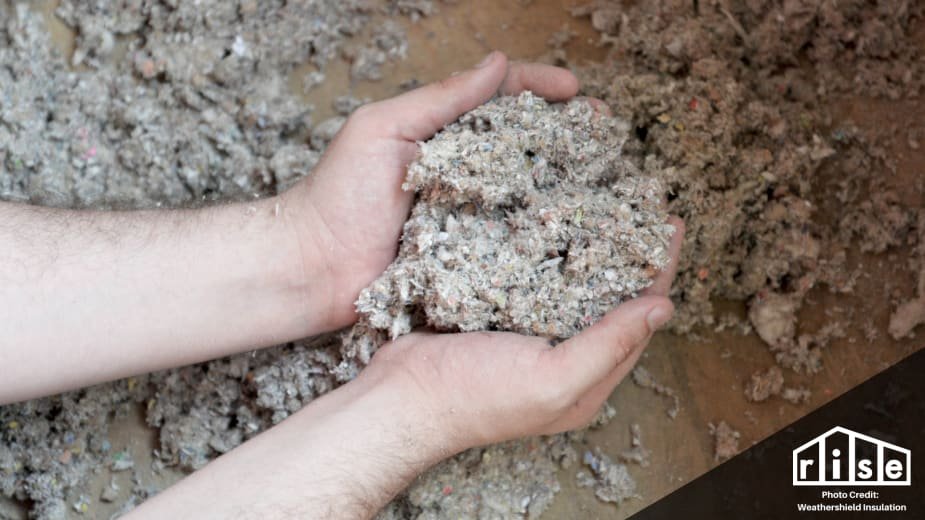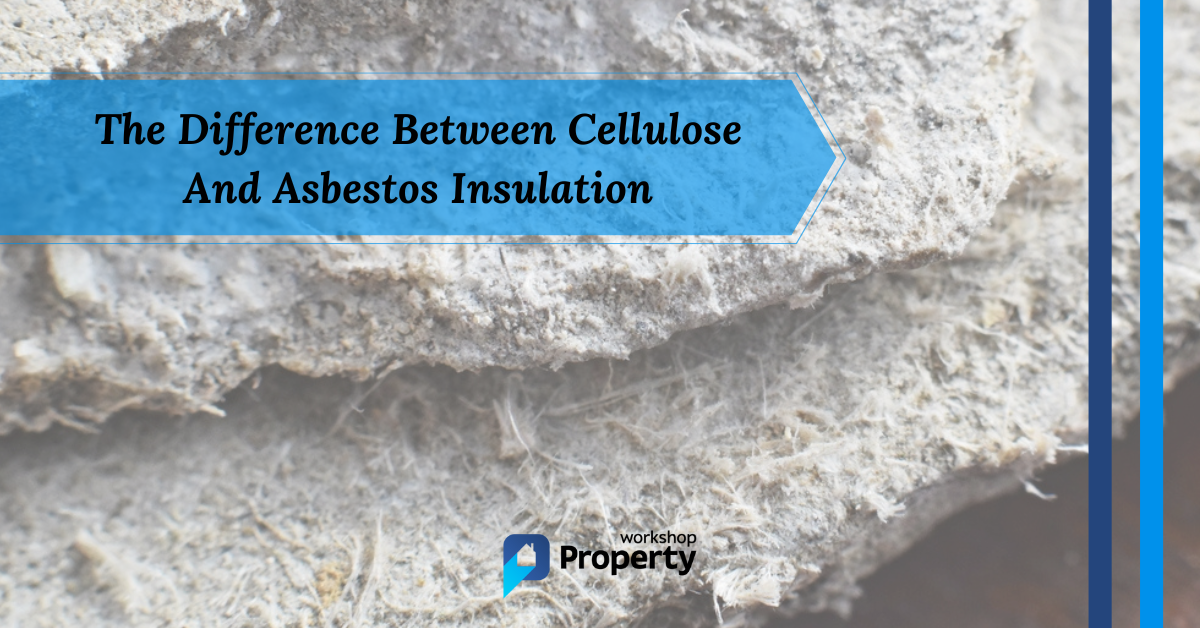Asbestos was a popular building material for decades in the UK. Its excellent insulating and fire-proof qualities meant that builders used it throughout houses and commercial buildings, but these qualities came at a cost.
Later on, scientists found that asbestos is highly hazardous to human health, and since then, builders have used cellulose insulation instead. Unfortunately, asbestos is still present in many buildings across the UK, and many people confuse it with cellulose.
While asbestos is dangerous, it’s considered relatively safe while undisturbed. If you think you’ve found asbestos, do NOT touch or move it. Call for expert help immediately.
The Difference Between Cellulose And Asbestos Insulation
At first glance, asbestos and cellulose insulation look similar. This section highlights the key characteristics of both materials, allowing you to safely identify each one.
How To Identify Asbestos Insulation

Due to its versatility, asbestos had many uses before it was declared hazardous. In older houses, loose fill and pipe insulation are the most common forms of asbestos insulation. Although it may be present in other places, these are the most likely to be confused with modern materials.
Loose-fill asbestos insulation tends to be blue-grey or whitish and looks similar to fallen snow. If disturbed, it emits a hazardous plume of dust.
How To Identify Cellulose Insulation

Cellulose insulation has a fluffy texture, resembles shredded paper, and is mottled grey.
As cellulose insulation is often manufactured from recycled paper or denim, it’s common to see flecks of colour in the material.
The Dangers of Asbestos
The danger from asbestos comes primarily from inhalation, so it’s critically important to not disturb it if you think you may have discovered asbestos insulation.
Insulation is arguably the most dangerous form of asbestos and is found regularly in British properties. While it’s present in other states, asbestos insulation is the easiest to disturb, increasing the chance of breathing it in.
Depending on the type of insulation, even a slight waft of air can cause the particles to become airborne. Because of this danger, the first thing you should do if you discover suspected asbestos is to stop working, restrict the area and put a mask on.
Asbestos is classified as a “Hazardous Waste” by the England and Wales Health & Safety Executive. That means it’s a criminal offence to transport asbestos without a Waste Carriers License, and there are rules around how you must handle, package and dispose of it.
Final Thoughts
There is often confusion between asbestos and cellulose insulation, not only because of the similarity in colour and texture but because cellulose was introduced soon after the dangers of asbestos were revealed. This unfortunate timing means that properties of similar age may have used either material.
I can’t emphasise strongly enough the need to take extreme care when dealing with suspected asbestos insulation. Contact an asbestos professional to assess it if you’re in doubt.
Cellulose insulation is not used much today, with other materials used for retrofit projects. Builders often use spray insulation within roof spaces, and cavity wall insulation is a cost-effective way to reduce energy bills and keep your home warmer.
FAQ
Below are answers to frequently asked questions about identifying asbestos and cellulose insulation.
How do I know if I have asbestos Insulation?
The only way to be 100% sure is to have the material tested by a professional.
However, you can often identify cellulose insulation by its shredded paper texture and visible dots of colour.
How can you tell if it’s cellulose insulation?
Cellulose insulation was a popular alternative when asbestos was banned.
Flecks of colour within the fluffy texture indicate that the material is made from shredded paper, hence cellulose.
Does old cellulose insulation have asbestos?
No, cellulose and asbestos insulation are two different materials.
Cellulose insulation is perfectly safe. Asbestos insulation is highly hazardous, especially loose-fill asbestos (often mistaken for cellulose).
If you suspect you’ve found asbestos, stop working immediately and call an asbestos professional.
How can you tell the difference between asbestos and fibreglass insulation?
You won’t find fibreglass insulation in loose form like asbestos.
While asbestos insulation was often ‘blown in’, fibreglass comes on a roll and is laid between timbers.
Although the fibres in fibreglass insulation can irritate the skin, it’s far safer than asbestos. Moreover, Fiberglass insulation is often coloured pink or yellow, while asbestos is bluey-grey or white.

